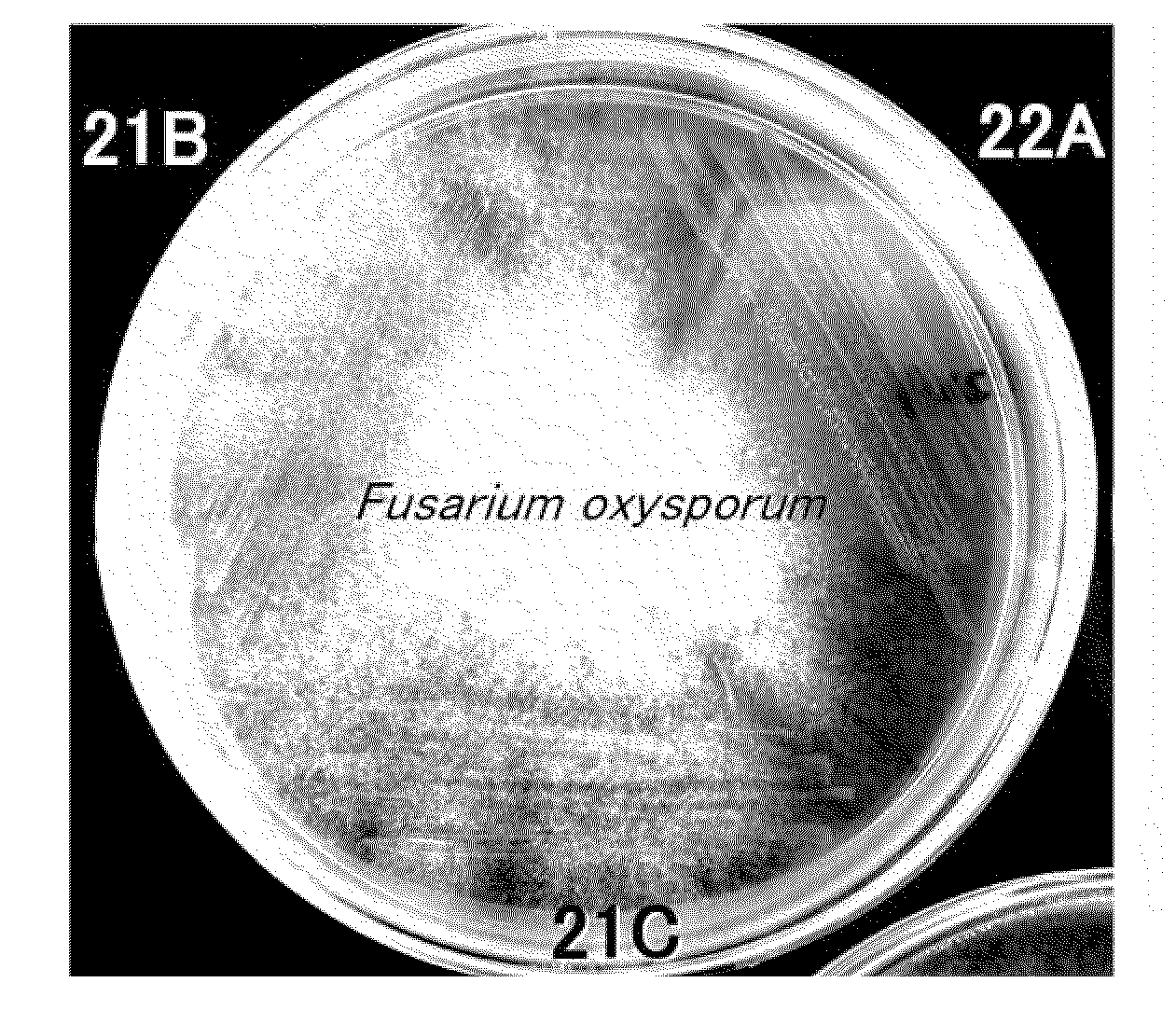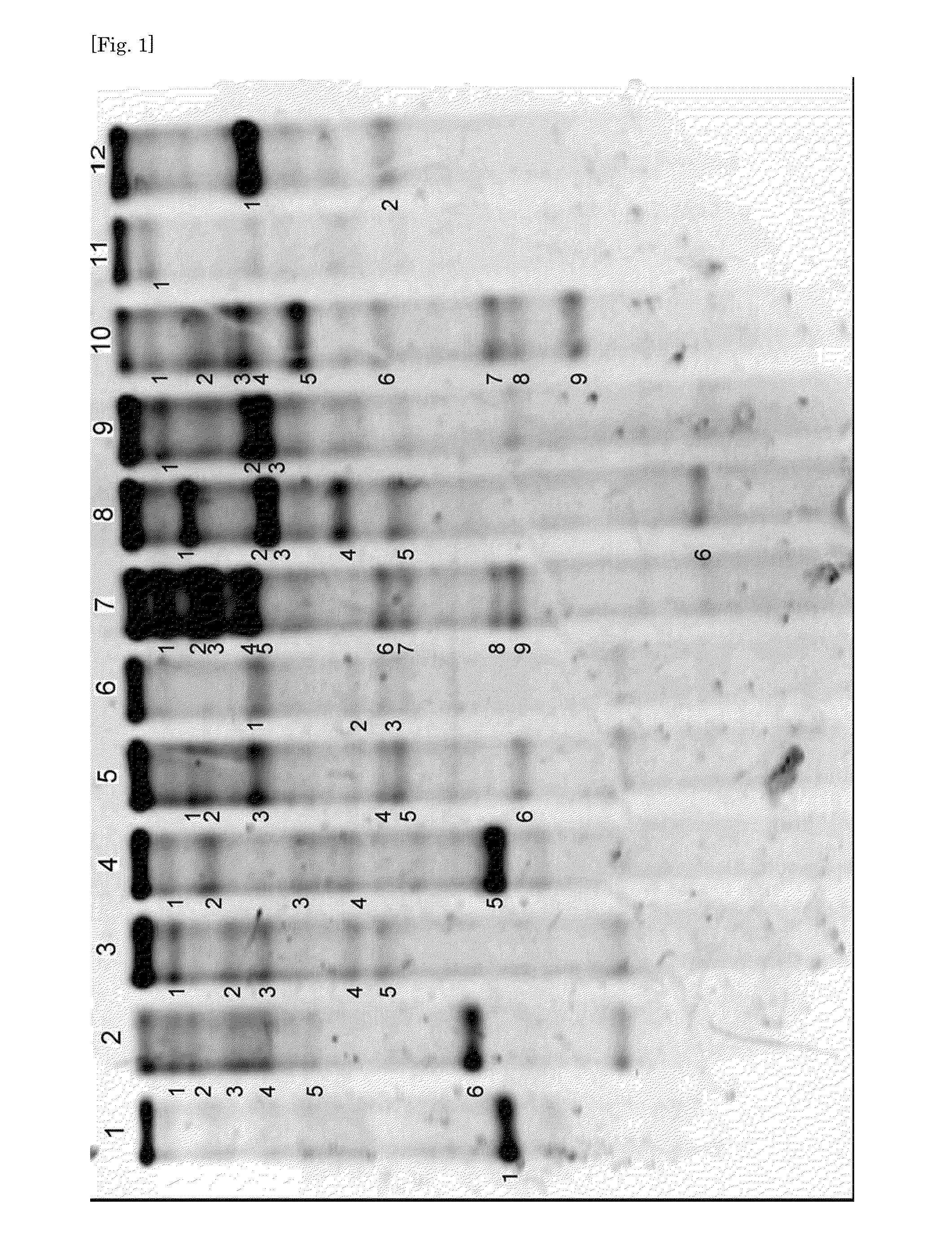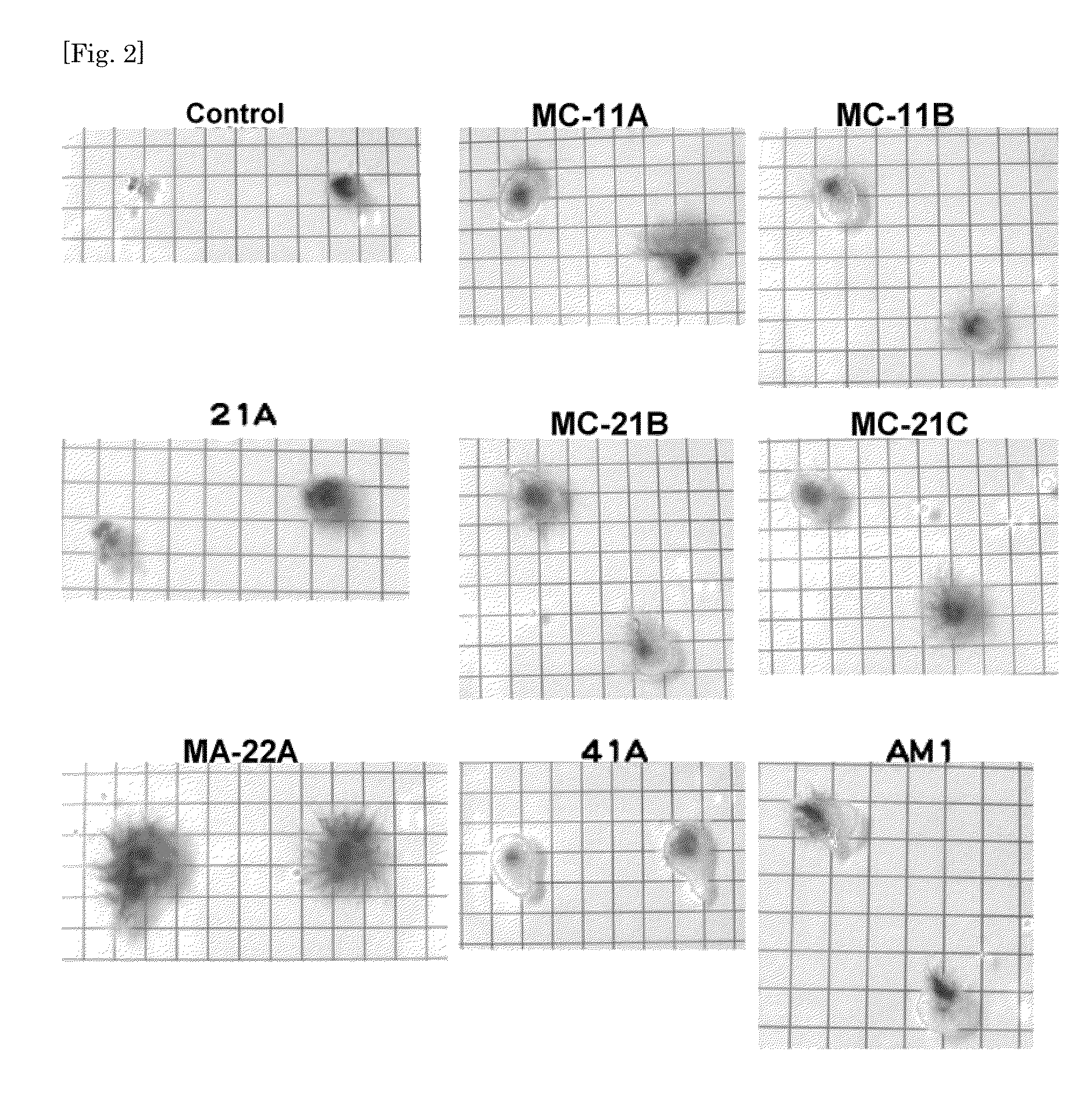Method and bacterium for promoting the growth of racomitrium canescens and seed plants
a technology of racomitrium canescens and seed plants, which is applied in the field of promoting the growth of racomitrium canescens and certain seed plants, can solve the problems of slow growth of bryophytes and so on, and achieve the effects of promoting the growth of protonemata of racomitrium canescens, promoting germination of seeds, and promoting protonemata rapid growth
- Summary
- Abstract
- Description
- Claims
- Application Information
AI Technical Summary
Benefits of technology
Problems solved by technology
Method used
Image
Examples
example 1
Growth Promotion of Racomitrium canescens (1)
Sterilization of Racomitrium canescens
[0027]Naturally grown moss of Racomitrium canescens (grown in Yamagata Prefecture) was obtained. The sporangia were washed with water of sufficient quantity (more than 1 mL per sporangium) twice, and treated with 70% ethanol for one minute. After having been further immersed in an aqueous solution containing 1% sodium perchlorate and 0.5% Tween20 for 20 minutes, the sporangia were washed with sterilized water five times. The sporangia were broken in sterilized water, and spores flowing out were collected with pipette. Sterile spores thus obtained were spread to an agar culture medium (a liquid of Hyponex™* diluted 1000 folds with water+0.8% agar), and cultured under a fluorescent lamp at 20° C. Growth of protonemata was observed with the naked eye in approximately two weeks after the start of culture. Note: Hyponex [mfd. by HYPONEX JAPAN CORP., LTD, containing 6% nitrogen in total (of which, 2.90% am...
example 2
Growth-Promotion of Tobacco
[0062]Seeds of tobacco (Nicotiana tabacum and Nicotiana benthamiana: provided from Leaf Tobacco Research Laboratory, Japan Tobacco Inc.) were treated with 70% ethanol for one minute, and then with 2% hypochlorous acid solution (containing approximately 1% Tween20) for 20 minutes. Seeds were washed 4-5 times with sterilized water. Four pieces of filter paper cut in 5.5 cm square were placed in plant boxes (made of plastic, 5.5 cm square, 9 cm of height), and sterilized by autoclaving. To this then was added 5 mL each of sterilized ½ Murashige-skoog culture medium (½ MS culture medium containing 0.8% agar). The Murashige-skoog liquid culture medium is of the composition shown in Tables 10-14, and ½ MS culture medium is provided by diluting it into ½.
[0063]Seeds were placed on the filter paper (30 seeds / plant box). Then, one of the cultures of MC-21, MC-21C and MA-22A strains which had been cultured (at 28° C., for 2-3 days) in 5 mL of methanol culture media ...
example 3
Growth Promotion of Barley
[0067]Seeds of barley (Hordeum vulgare, subsp. vulgare cultivar Akashinriki: provided from The Barley and Wild Plant Resources Research Center, The Research Institute for Bioresources, Okayama University) were treated with 70% ethanol for one minute, and then with 2% hypochlorous acid solution (containing approximately 1% Tween20) for 30 minutes, and were washed 4-5 times with sterilized water. 20 seeds each of the above seeds were placed on a solidified agar which had been prepared by pouring 40 ml of sterilized 0.8% agar into a separately sterilized plant box (40 seeds for each group). The culture of MC-21C or MA-22A which had been cultured according to the above method was dropped by 5 μL each on each of the seeds of a corresponding group, while only water or methanol culture medium was dropped on the seeds of control groups. The seeds were cultured at 25° C. for 8 days under light of a fluorescent lamp for 12 hours per day and in the dark for the rest o...
PUM
| Property | Measurement | Unit |
|---|---|---|
| humidity | aaaaa | aaaaa |
| humidity | aaaaa | aaaaa |
| diameter | aaaaa | aaaaa |
Abstract
Description
Claims
Application Information
 Login to View More
Login to View More - R&D
- Intellectual Property
- Life Sciences
- Materials
- Tech Scout
- Unparalleled Data Quality
- Higher Quality Content
- 60% Fewer Hallucinations
Browse by: Latest US Patents, China's latest patents, Technical Efficacy Thesaurus, Application Domain, Technology Topic, Popular Technical Reports.
© 2025 PatSnap. All rights reserved.Legal|Privacy policy|Modern Slavery Act Transparency Statement|Sitemap|About US| Contact US: help@patsnap.com



